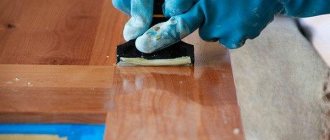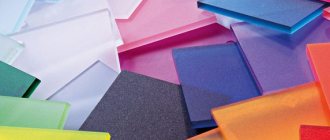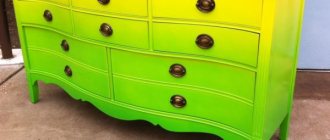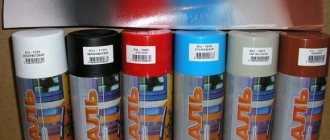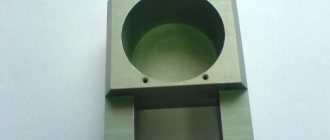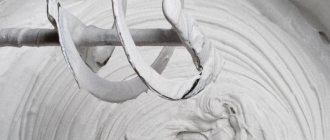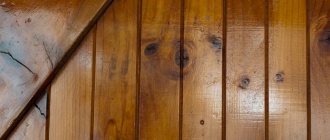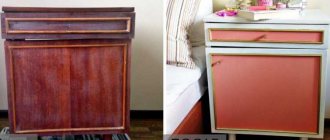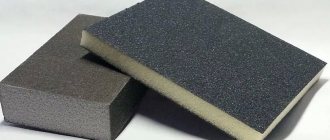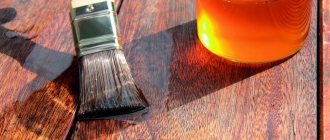If you are tired of your old wooden furniture, which has long lost its presentation, do not rush to throw it away. You can easily restore it to its former shine and beauty. To do this, you don’t need to be a professional restorer and you can easily transform old furniture at home.
This article will talk about removing the old paintwork - this is the first stage of preparing furniture for further transformation and decoration.
You can remove varnish and paint from the surface of wooden furniture by sanding or using special products containing a solvent. Read the details of each method in this material.
Chemical method (wash)
The most popular method for removing old varnish from surfaces such as antique wooden furniture.
Types of chemicals and removers
Washing is done with powders, gels, liquids or a standard solvent.
It is better to wash shellac with denatured alcohol. The solution works well if there are few layers. Denatured alcohol evaporates quickly, so it does not penetrate deeper than the third layer.
For large-volume work, powder products are better, since in bulk form they can be stored for a long time without losing their qualities. They are convenient not only to store, but also to transport. Before use, the powder is diluted with water to a thick paste. Washing off the varnish with the prepared solution is done in a vertical position.
Gel and paste removers can quickly remove many layers. They can wash off about 10 layers at a time.
Nail polish removal technology
Chemical removal of old coating from wood. means is carried out in four stages.
Applying wash
Brushes are used for application. Their size depends on the volume of work. The brush is thoroughly moistened with the chemical composition, and the varnished surface is generously wiped. The brush is applied to one place only once.
The remover can be sold in spray form. After spraying, a foam forms on the wood surface and reacts with the varnish. The main disadvantage is the removal of only thin layers of paint and varnish materials.
Since the remover is a chemical substance, all work must be carried out in a well-ventilated area in compliance with safety regulations. Hands are protected with gloves, and a respirator is put on the face.
Film coating
To make rinsing more effective, a “compress” is applied to the site where the solution is applied. The treated surface is covered with polyethylene. The compress is kept on the tree for 1 to 4 hours. The time depends on the number of paint layers. A sign of peeling of the varnish film is a change in the color of the remover to a darker one, as well as bubbling of the coating.
Removing the varnish
When the varnish softens, it can be removed with a spatula. The new tool is not suitable because it has sharp edges. The spatula must be rounded with a sharpener so that woodworking can be done more accurately.
The swollen material must be pressed very carefully. It’s rare that someone can remove varnish in one go. In this case, repeat the steps or wipe off the remaining film with sandpaper.
Removing the wash
Traces are washed off with plain water or vinegar solution. To prepare the solution, 0.5 liters of water is mixed with 0.1 liters of vinegar. It is necessary to clean the wood of chemicals thoroughly and quickly so that the liquid does not damage it.
After washing, the treated wood is wiped dry and left for final drying in a dry, ventilated place, out of direct sunlight.
After drying, the wood can be re-coated with any product.
Removal methods
Now to the question of how to remove varnish from old furniture.
In some cases, removing furniture varnish is quite easy. In other cases, when removing varnish with a polyester base, you will have to put in much more effort or use more aggressive substances.
Regardless of the choice of devices for restoration, you need to work extremely carefully. The main thing here is not to damage the furniture itself. Otherwise, simply polishing and hiding defects created by your own hands will no longer be possible.
All removal methods can be divided into 4 categories:
- chemical;
- thermal;
- mechanical;
- aquatic.
I think you guessed what I want to do. Right. Consider each option separately.
Chemical removal
First, let's talk about the chemical method. Many people use acetone. Although stores also sell special washes. To be honest, many of them are acetone based.
Now choose for yourself. The chemical is aggressive and can also corrode up to 10 layers of old varnish.
Powder products have proven their effectiveness. They are diluted with water.
The whole process roughly looks like this:
- Simply shake the liquid solvent closed;
- dilute powder mixtures with water according to the manufacturer’s instructions;
- apply a layer of wash using brushes;
- place a layer of plastic film on top to enhance the effect of removing the paint layer;
- wait about 3-4 hours;
- remove the film when the remover reacts and the varnish swells;
- Using a wide spatula, carefully remove the peeling coating;
- Use small spatulas to remove varnish in hard-to-reach places;
- walk over the surface with sandpaper;
- remove residues of the remover by mixing 100-150 ml of vinegar and 500 ml of clean water;
- Dip a sponge into the solution and go over all the furniture parts.
All that remains is to dry the furniture, and then proceed to the further stages of restoration.
Mechanical removal
In many videos, old varnish is removed mechanically.
Here I can offer 2 options.
- Sandpaper and wire brush
. A good way to remove varnish from old furniture if it has already begun to peel off in places. It is necessary to clean the composition from the furniture in a circular motion. The work is energy-intensive, but effective; - Power tools and sandpaper
. Here you can arm yourself with a grinder, as well as an eccentric sander. You also need some hard sandpaper. Install sandpaper with 80-120 grit into the sander. And treat all surfaces with a power tool. Then change the sandpaper to 180 grit. Finally, the surface is sanded with fine grain.
The second option is suitable if the varnish does not peel off and also holds well. But it needs to be removed.
Mechanical methods are suitable in situations where paint or enamel will then be applied to the furniture. But such treatment often leads to damage to the wood. You need to be careful.
Thermal impact
The next method is how to remove varnish from old furniture. This is the effect of heat.
Here you will need to arm yourself with a hair dryer, iron, or blowtorch.
The advantages include high efficiency, as well as processing speed with excellent result quality.
But to achieve this effect you need to be extremely careful.
- First you need to heat a small area so that the varnish begins to melt;
- Then you need to take a spatula or knife and carefully remove the composition;
- You should work quickly and carefully, since the varnish hardens quickly;
- Having finished with one fragment, move to the next section.
In this case, it is important not to violate the temperature regime, and also to keep the instrument at a certain distance. Otherwise the tree will turn black. And then covering it with transparent varnish will no longer work. Just paint.
Removal with water
You can update an old cabinet and also repair a wooden chair by removing the varnish from them with water.
The water method is the safest and at the same time simplest. But it is suitable only for those varnishes that are afraid of moisture. When hot liquid hits the surface, the composition will gradually dissolve. Next, all that remains is to remove it all with a spatula.
The task is to take hot water and generously moisten the furniture with it. Here you can use rags and sponges, or whole towels, wrapping part of a cabinet, chair, etc. in them.
Wait a bit for the varnish to swell. And now shoot. Next, go over the surface with sandpaper and let the wood dry. And you can proceed to the next stages of restoration.
How to shoot mechanically
Removing varnish from floors, doors and other surfaces mechanically is called scraping.
You need a construction tool - a scraper (a sharpened steel plate on a handle). To increase the pressure on the working surface, the cycle handle is fixed at an angle.
You can replace the tool with ordinary glass (see below). Unlike tsikli, glass quickly dulls and you must use gloves when working with it to avoid getting hurt.
A thin layer can be easily removed with sandpaper. You can sand by hand or with a grinder with an attachment. Sanders will help you quickly clean wood. They are belt, vibrating and eccentric. Vibrating ones are used more often. A sandpaper is installed on the “sole” of the grinder, which is used to clean the base.
When working, a lot of dust is thrown into the air, but the appearance of the sanded area is more aesthetically pleasing than after manual processing. To prevent surrounding objects from becoming dusty, they are first covered with plastic film.
Before mechanical cleaning of furniture, it must be disassembled into individual elements to make it more convenient to carry out the work.
- First, rough processing is done with a wire brush.
- Coarse-grained sandpaper is fixed on a wooden block, which gradually removes the varnish in the longitudinal direction over the entire area of the part.
- On the block, the sandpaper is changed to fine-grained, the surface is sanded to a smooth state.
- The wood is cleaned of fine dust.
Unlike chemical processing, mechanical processing of wood is a labor-intensive but safe process.
If you are careful, this method is more gentle on the wood, which is especially important for cleaning rare furniture.
How to remove varnish from furniture at home?
The process of restoring furniture is a rather difficult task, for which several methods can be used. The restoration procedure consists of several stages. One of the most important steps is to remove the old varnish coating. Therefore, you need to figure out how to properly remove varnish from furniture without damaging the wooden surface.
Heat treatment
Heat treatment - heating the surface, under the influence of which the varnish begins to peel off and is easier to remove mechanically or chemically.
When heated, the varnish releases toxic substances, so it works in a well-ventilated area (naturally and artificially) and in protective equipment. To prevent fragments of the coating from getting into your eyes when separated from the base, wear a protective mask or goggles.
When the varnish warms up enough, you need to switch to chemical cleaning. If heated for too long, the coating begins to char. The following tools are used for heating.
- Gas or gasoline burner. The work is carried out with open fire, which means it is necessary to strictly adhere to fire safety rules.
- Construction hairdryer. The household analogue is not suitable, since its heating temperature is lower. Using a construction device, the surface is heated to 600 °C.
Thermal is the fastest method, but there is a possibility of overheating and fire of the wood. During work, both hands are used: one holds a hairdryer or burner, the other quickly removes the varnish with a spatula.
Store products
Specialized stores have a wide range of products that allow you to remove the paint layer. Such compositions can be in the form of powders and pastes. These types are considered the most effective; they are diluted with water to a paste-like state and applied to the wood with a brush. Pastes and powders are the most effective because they remove up to 10 layers of varnish.
Gels and liquids supplied ready-to-use are less effective. They are also applied with a brush, but they can remove up to 3 layers of varnish. Sprays are considered the most convenient for use, however, their effectiveness is the least in comparison with analogues. After any of the above products are applied to the varnish coating, it must be covered with cellophane film. It is removed when the surface darkens and the varnish mixture becomes viscous, then the paint and varnish material is removed from the furniture using a spatula.
About paint for furniture
Once the furniture has been sanded, it is recommended to coat it with a layer of primer. This will improve the quality of paint adhesion and save paint consumption.
There are thousands of recommendations on what paint to paint furniture with, but experts who work with veneer and other wood bases advise choosing water-based acrylic paint. Of the many types for homework, acrylic and thixotropic paint are preferable.
Acrylic paint dries quickly, has no pungent odor, and is easy to apply. The water-based paint is wear-resistant, the acrylic surface is easy to clean and durable. Water-based paint can be diluted with water, if necessary, for example, to achieve a lighter tone.
Craftsmen recommend that when choosing furniture paint, pay attention to the description for what purpose it is intended. For example, nitro-, glypthal and pentaphthalic paints are suitable for repainting garden and garden furniture, but not suitable for home furniture
The paint is suitable for color selection and tone tinting.
Thixotropic paint has a dense consistency, does not flow and does not leave smudges when applied. It fits perfectly and after drying creates a plastic effect.
To achieve a clear wood pattern effect, you need to use a stain or mordant for coloring. The stain is presented in a wide range of types and has a rich range of natural wood shades. The product has a low impregnation class, approximately 0.3-0.5 mm. The layer can be easily removed with sanding equipment or sandpaper. The effect of stain is still not as natural as that of mordant.
Using stain you can highlight a beautiful wood pattern
The stain gives the effect of a natural finish; you can hardly tell that the surface is painted. The mordant contains elements of tannins, due to which a high class of adhesion to wood is achieved.
Types of varnish vary in properties and chemical content. There are the following types of varnishes suitable for repainting home furniture:
- Nitrolac. This type is used for coating small wooden parts. Easy to apply, dries quickly, but has a low wear resistance class.
- Water based varnish. Suitable for all types of wooden surfaces. This varnish is odorless, non-toxic, but dries in at least a day.
- Polyurethane varnish is the best option. Excellent grip on wood, high wear resistance class. This varnish must be diluted with solvent before application. Used for application to veneer and other wood substrates.
- Shellac varnish is one of the modern and popular types of varnishes. With it you can achieve the perfect gloss or aging effect. It has a low strength class and belongs to the category of expensive varnishes.
Craftsmen use special tools and materials in their work; they have experience and daily practice with woodworking. But you, too, can achieve an ideal result at home if you take into account all the subtleties of repainting furniture, even in the absence of technological equipment like in a workshop.
Set of tools and materials
Before removing varnish from old furniture, you need to prepare some materials, as well as tools.
There’s just no point in taking everything at once. Collect a set depending on which method you choose.
When restoring lacquered furniture, or the same Viennese chairs coated with varnish, you must first remove the old layer.
What the furniture is made of plays an important role. It is often necessary to remove layers from veneer, wood, chipboard coatings, etc., or from wood paneling.
The tools you will probably need to use are:
- sandpaper;
- sanding paper;
- chemical compositions;
- tassels;
- sponges;
- hard brushes;
- blowtorch;
- construction hair dryer, etc.
Also be sure to prepare the following set:
- protective glasses;
- mask or respirator;
- plastic film;
- protective gloves;
- headdress.
This will help you protect yourself from possible injuries, as well as contact with aggressive chemicals.
